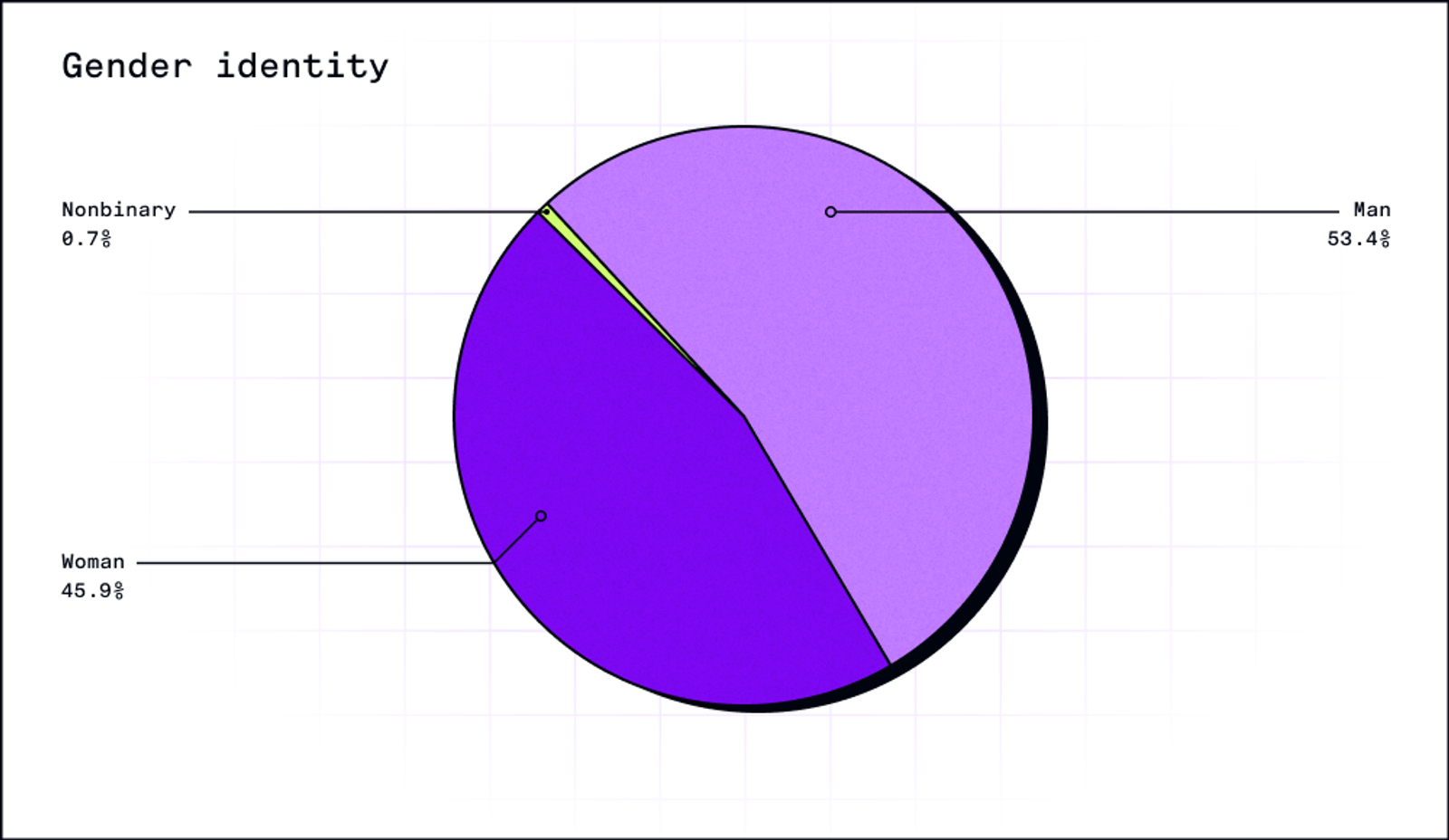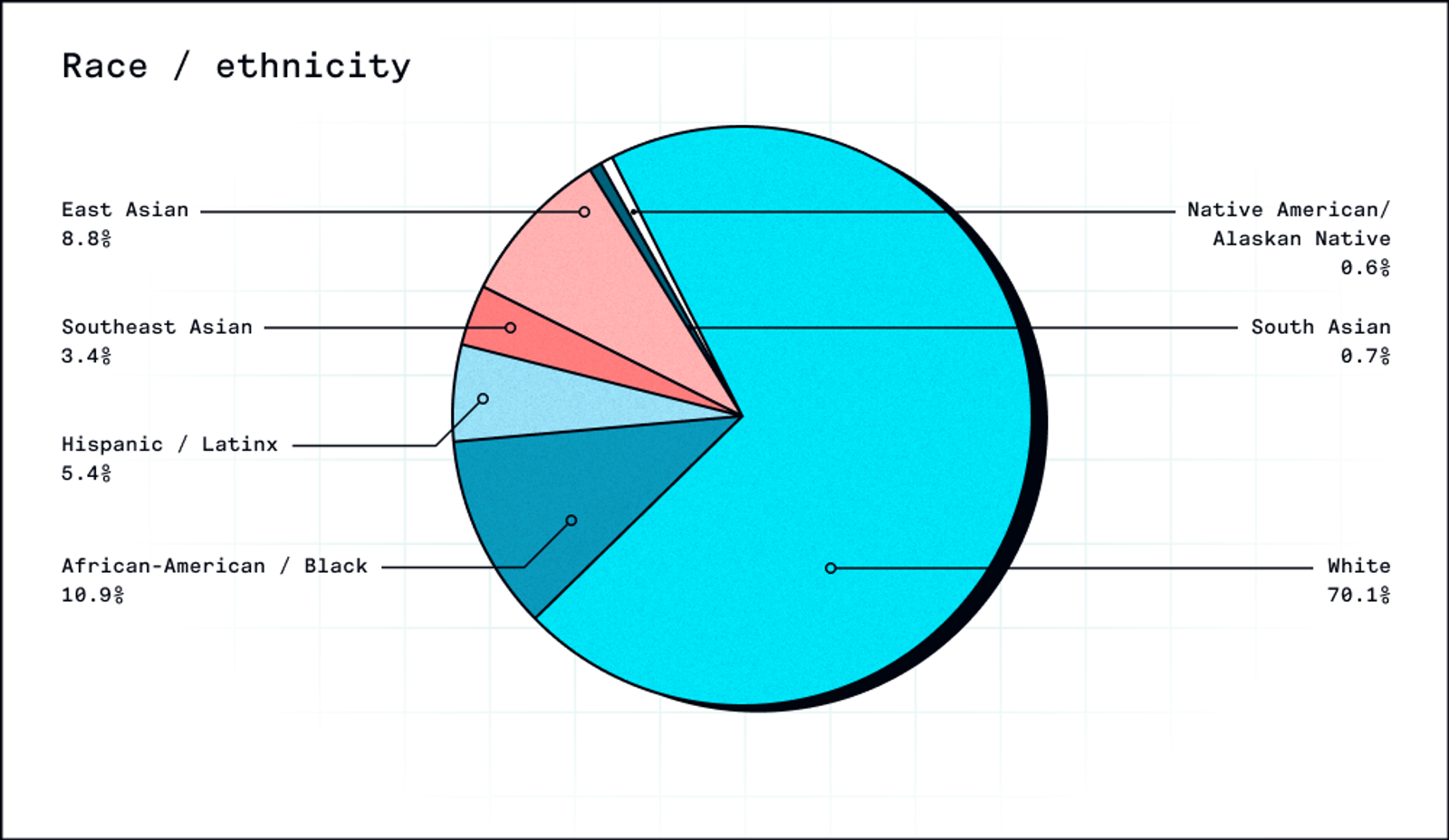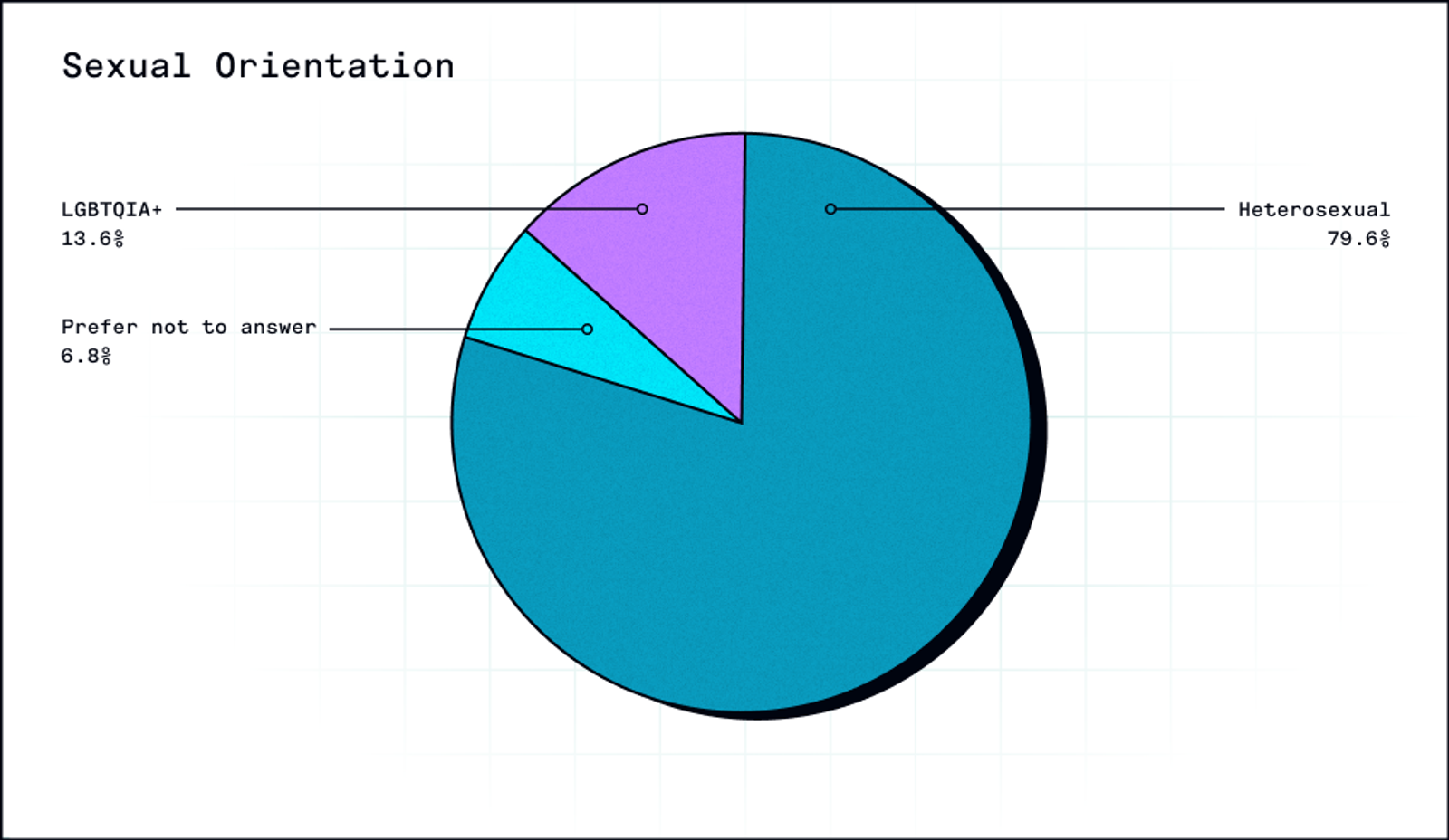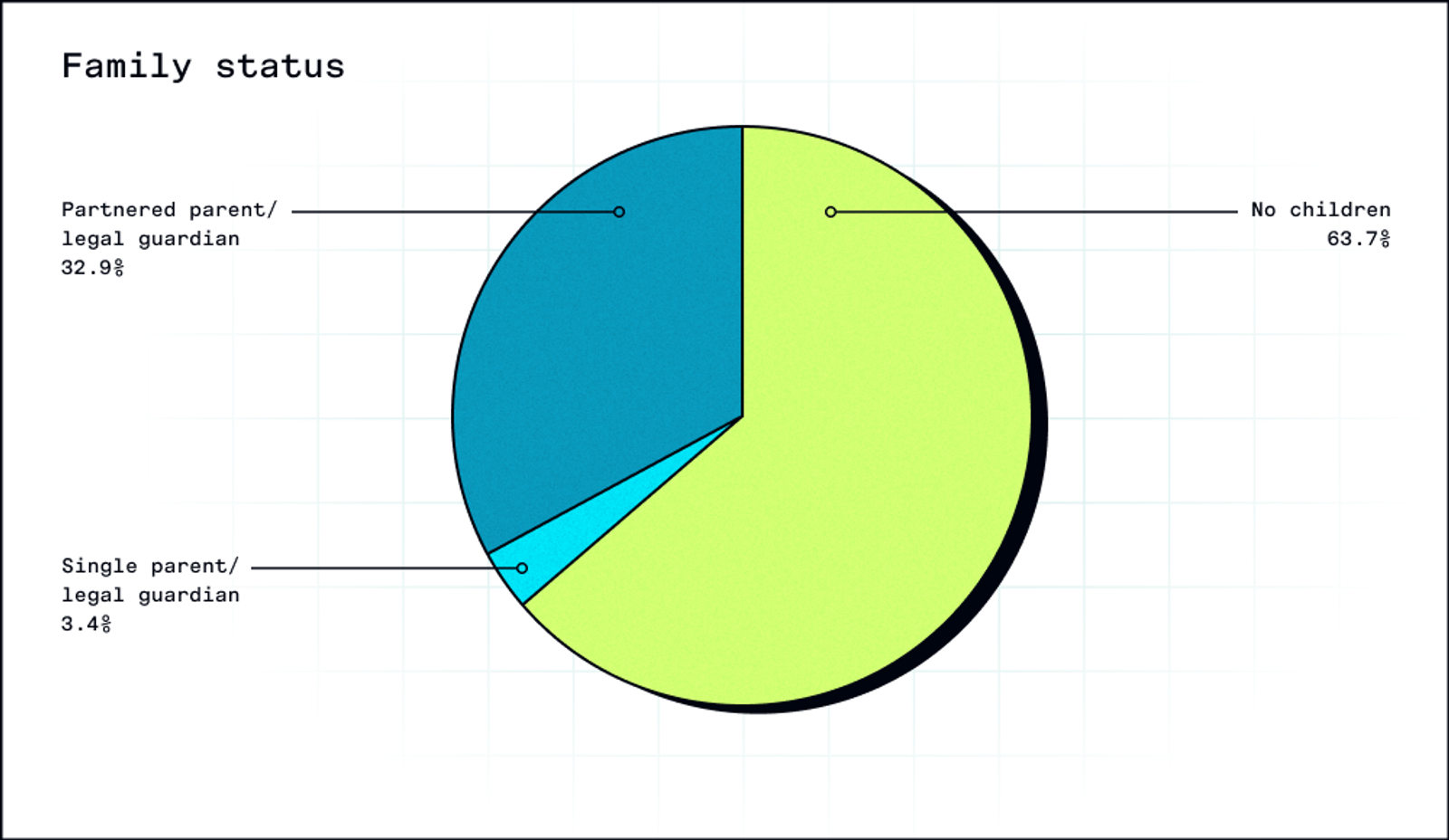Hologram’s 2021 Diversity Report

As our fiscal year comes to a close, we want to share our 2021 diversity goals and the progress we made.
At Hologram, our success begins and ends with our team. “Hiring is the most important thing we do” is a phrase you’ll hear almost every day on Zoom calls and in Slack.
At the beginning of 2021, we were looking at a year of major growth. So, as we geared up for our Series B fundraising round, we set ambitious goals for the year and prepared to more than triple our team.
We knew that our hiring goals needed to include making our team more diverse in order to serve our diverse range of customers.
So among the many goals we set for 2021, we committed to specific goals around the diversity of our team. Now that the year is complete (Hologram’s operating cadence is on a fiscal year-end of January 31st), we want to transparently share our progress.
Our 2021 diversity goals
While not all dimensions of diversity are measurable, Hologram currently measures team demographics in the following areas:
- Gender
- Race/ethnicity
- Age
- Sexual orientation
- Disability
- Family status
These are certainly not the only or the best ways to define one’s self or one’s value to Hologram. They are simply the best dimensions we’ve discovered so far to quantify our representation of groups that are historically underrepresented in our industry.
Using the demographics of the United States as a guide for our nationally distributed team, we asked ourselves, What do we want the makeup of the Hologram team to be?
While there are many worthwhile goals we could have chosen, we decided to focus on just two: increasing our representation regarding gender and race & ethnicity. Our 2021 goals for these were:
- Teammates of a marginalized gender (e.g., women and nonbinary teammates) ≥ 50%
- Teammates of color (e.g., BIPOC [Black, Indigenous, and people of color] and Latinx teammates) ≥ 25%
Why these specific goals?
Gender: As we grow, we know that the majority of Hologram’s roles (50%- 70%) are going to be technical in nature (engineering, product, design). Understanding that women are more likely to be absent from technical roles for a number of systemic reasons, we knew we needed to dig in early on gender parity.
Race & ethnicity: In addition to working to correct decades of systemic racism that locks people of color out of key wealth-building opportunities, there’s also a business case for this goal: Racially diverse teams outperform non-diverse ones by 35%. Research shows that 25-30% is the tipping point at which underrepresented groups can gain momentum and reach parity, so that’s where we set our goal.
Additionally, both of these aspects of identity can sometimes (but not always!) act as a visible signal to members of other underrepresented groups that they will be welcomed into a space.
Again, we could have chosen many diversity goals, all worthwhile. These were our starting place.
Our 2021 results
Goal: Teammates of a marginalized gender (women and nonbinary teammates) ≥ 50%
Result: Today, 46.6% of our team is made up of teammates of a marginalized gender
We weren’t successful in reaching this goal, but we didn’t end too far off from it.

Goal: Teammates of color ≥ 25%
Result: People of color now make up 29.2% of our team
We surpassed this goal by more than 4 percentage points and continue to grow in racial and ethnic diversity.

Other key areas we track:
While we didn’t set goals around these in 2021, we also track other important axes of identity like age, sexual orientation, family status, and disability status across the team.




We define disability broadly, including blindness, chronic illness or pain, deaf or hearing-impaired, use a wheelchair, learning disorder or mental health disorder or illness.
Understanding these demographic elements of our team allows us to make better decisions on the People team. Additionally, tracking and reporting on these areas annually will enable us to benchmark for the future.
Hologram DEI strategies that worked well
The following are are some key policies that have helped us move the needle in terms of team diversity, equity, and inclusion.
- Our apprentice engineering program allows us to welcome and accommodate engineers who are early in their careers. This has been an important avenue for adding technical women to the team. We’re currently working on expanding this concept across other Hologram departments like Product.
- We modified our referral program to offer a $3,000 bonus per referred hire, plus an additional $2,000 bonus per referred hire of women, non-binary, BIPOC, and/or Latinx candidates. This program has been an important counterbalance to correct for the fact that neutral employee referral programs disproportionately benefit majority groups and deny access to women and diverse candidates.
- Allocating a portion of our Series B funding round specifically to underrepresented investors allowed us to increase Hologram’s preferred shareholders to more than 25% women and/or people of color. This effort connected us with many new communities and (we hope!) shows that we’re serious about doing the work to increase representation across all levels and areas in tech.
- Hologram worked with the diversity and inclusion training firm Paradigm to build out an equitable hiring playbook in early 2021, and provides Paradigm REACH to all teammates for self-guided e-learning on topics around unconscious bias and allyship. We’ve also partnered with LifeLabs Learning for in-depth trainings around inclusive hiring and practices.
- As our team has grown, we’ve added several employee-led spaces for our diverse team — including private Slack spaces for members of underrepresented groups to spend time together.
- We also made the change in early 2021 to add clear salary ranges to all Hologram job postings, in line with our core value of transparency. We believe this move has led to more trust and credibility with all candidates.
Where we can improve and next steps
We are excited and grateful to have a variety of backgrounds, ideas, and perspectives on our team. We want Hologram to be a reflection of the world around us.
We made big strides in DEI in 2021, but there is still plenty of work to be done. In particular, we plan to:
- Continue working toward gender parity, especially in so-called “technical” roles like engineering, product, and design
- Add a new focus layer on department-level demographics to ensure that diversity is not siloed but instead represented across all areas of Hologram
- Work specifically on strategies to ensure diversity on the executive team
We are excited to continue to build a workplace that reflects the diversity around us and that empowers each and every employee to show up authentically at Hologram.